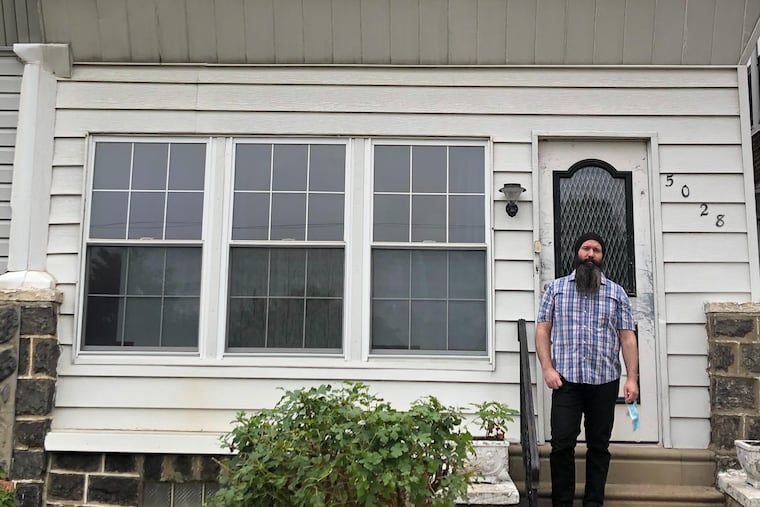Wells Fargo, Philly’s biggest bank, will tap federal money for homeowners in need, who now have just 5 days to apply
Homeowners can get up to $1,000 a month for six months for mortgage assistance. And renters can get help too. But both groups need to apply before Sept. 30.

An underused $25 million program to bail out Pennsylvania homeowners who lost income due to coronavirus shutdowns got a shot in the arm Friday when Wells Fargo Bank reversed course and agreed to work with the program.
As of Sept. 18, only 2,000 Pennsylvanians had applied for $8.4 million, or one-third, of the money in the Pennsylvania Pandemic Mortgage Assistance Program, which was unveiled by state officials in July. Only $3.1 million has been paid.
The program offers up to $1,000 a month for six months to homeowners who need mortgage assistance due to coronavirus closures. But under a law passed by the General Assembly, homeowners have only until Wednesday, Sept. 30, to apply for the money at phfa.org/. (Another program at the site also helps renters.)
Several advocates said the program could be a godsend for those struggling to pay their bills, and requires little effort from banks. Several neighborhood and community banks have approved customers for the program, and PNC, the state’s largest bank, “is participating,” said PNC spokesperson Marcey Zwiebel.
But other major Philadelphia-area lenders, including Citizens, TD Bank, and WSFS, have not joined the program. Citizens and WSFS officials said those banks generally don’t service mortgage loans, but typically sell them soon after they make them. So they are little affected by whether homeowners pay. Banks or other investors who buy the loans can accept the grants,
After taking applications for the program in August and earlier this month, Wells Fargo, which has the region’s largest bank branch network, decided just last week not to take the money after all, telling applicants that the government program imposed too many conditions.
But after aggrieved borrowers posted protests on social media, on Friday afternoon spokesperson James Baum sent this statement: “After a careful review of the Pennsylvania Pandemic Mortgage Assistance Program and conversations with the state Housing Finance Agency over the past week, we have determined that due to recent changes in the program, we will be able to make it available to some Wells Fargo mortgage customers and are hopeful that the issues preventing us from making it available for all qualified customers can be resolved.”
Baum added that the program “offers us another tool to assist customers in Pennsylvania” in addition to late-payment (forbearance) programs adopted by many banks and credit unions.
At first, the program sounded like an easy fix: As part of Pennsylvania’s share of the federal CARES Act, lawmakers in Harrisburg had approved $25 million to help pay home loans.
But in a statement Thursday, before its final reversal, Wells Fargo cited limits on eligibility, the time frame of the mortgage relief (March through November), and a lack of “clarity in certain rules and processes.” .
Officials of the Pennsylvania Housing Finance Agency, which administers the program under executive director Robin Wiessmann, a former state banking secretary, declined to comment.
Hard-pressed borrowers who signed up after the Wolf administration announced the program in July were dismayed when Wells Fargo said it was pulling out.
"We will survive,” but others could “lose their homes,” worried Robyn Stephens, who helped her partner, Matt Zwick, a grocery store employee who has been home caring for her, to apply for aid paying the mortgage on his house in West Philadelphia’s Kingsessing section.
She cited six weeks of encouraging correspondence from bank officials — ending last week, when a Wells Fargo rep wrote tersely that the bank would not proceed. Stephens and Zwick took to social media to protest and network with other frustrated applicants.
Stephens expressed joy at the bank’s reversal, and asked: “Did they cave because of folks complaining and you were about to expose them?” Wells Fargo officials declined to comment.
Though banks and state and local forebearance programs have helped many borrowers, including Zwick, delay payments, the Pandemic Assistance Mortgage Program is the only one that offers direct grants, said James Jackson, mortgage advocate at the Philadelphia Unemployment Project, who had helped Zwick spread the word about the program and Wells Fargo’s reluctance.
If banks won’t take the grant money, homeowners who qualify for federal aid are more likely to lose their homes or be forced to go without other basics, warned lawyer Irwin Trauss, head of the consumer lending program at Philadelphia Legal Assistance. He noted that Wells Fargo apologized earlier this year for moving some homeowners into forbearance programs without their approval.
“I think Wells Fargo is trying to regroup,” said Steve Gardner, head of Clarifi, the Philadelphia nonprofit credit-counseling service.
Trauss is concerned that the $1,000 a month limit on aid — and provisions preventing banks from accepting additional money for larger mortgages from other aid programs — made many who should benefit ineligible. The 2,018 initial applicants include 447 from Philadelphia (home to one in eight Pennsylvanians) and 373 from its four suburban counties.
According to Trauss, the General Assembly added the $1,000 limit and other restrictions to the mortgage aid program when legislators passed it this year. Also, Trauss said, PHFA’s own rules made it tougher for people whose mortgages were already in default to get aid, though some of those rules have been eased.
He expressed frustration the program’s bottlenecks weren’t cleared faster. “It is free money, requiring almost nothing of the lender" but to agree to take the money, Trauss said.